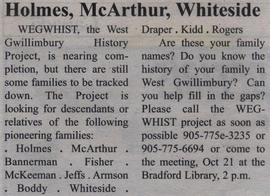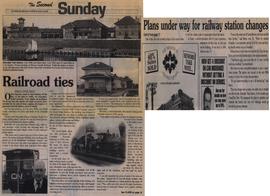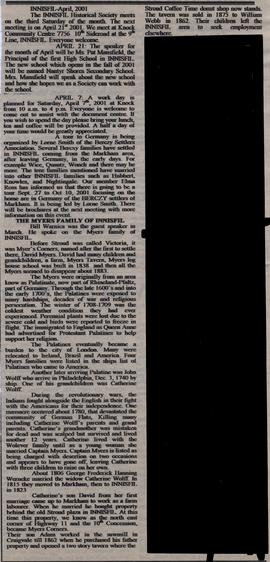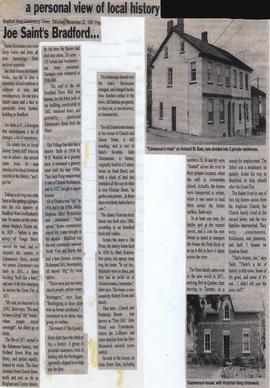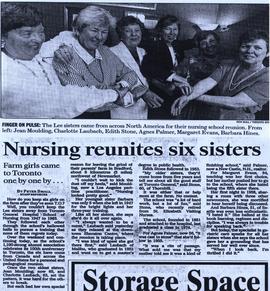Municipality :
Community : Bradford
Lot :
Concession :
Description : December 31ist marked not only the end of the old year and the Millennium, but the end of an era in Bradford. At the stroke of midnight, Lewis Ambulance Service ceased to exist, Flowing seamlessly into the new Health Trust Pre Hospital Services Inc., land ambulance providers for Simcoe County. Mac Lewis purchased the ambulance service 37 years ago, in 1963, as part of the Lathangue Kilkenny Funeral Home. The single ambulance - a 1954 Pontiac, equipped with 2 stretchers, Oxygen, bandages, and little else - answered 143 calls, staffed by Lewis and a number of part-timers. In 2000, Lewis Ambulance Service answered over 3,300 calls - "still with one vehicle," notes Lewis, but that vehicle is now equipped with a full array of equipment, from backboards to defibrillator, and staffed by employees that include 8 full-time and 10 part-time Level 1 Paramedics. There have many other changes over the last 37-plus years, especially in the attitude of the province towards private ambulance operators. Prior to 1963, there were 425 private operators in the Province. In 1964, they banded together to form the Ontario Ambulance Operators' Association, and began lobbying the government to set standards, for training, ambulances, etc. The government resisted until 1967/68, when it appointed Dr. Norman McNally as the Director of Ambulance Services - and within days, Dr. McNally was telling operators that thy were obsolete, and that the government would be taking over the service within 5 years. By 1975, the Province had purchased or closed all but 71 of the privately-owned ambulance services. Subsequent governments reversed the trend; it seemed that every time the government changed, the policy changed. Lewis not only has praise for Health Trust Pre Hospital Services, but for the direction that the County has decided to take. Simcoe County Council has approved expanding the service, adding 5 new stations and 5 ambulances, and up to 40 paramedics, to improve response times.

